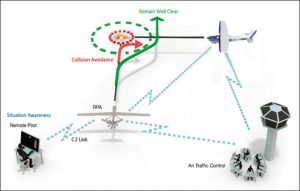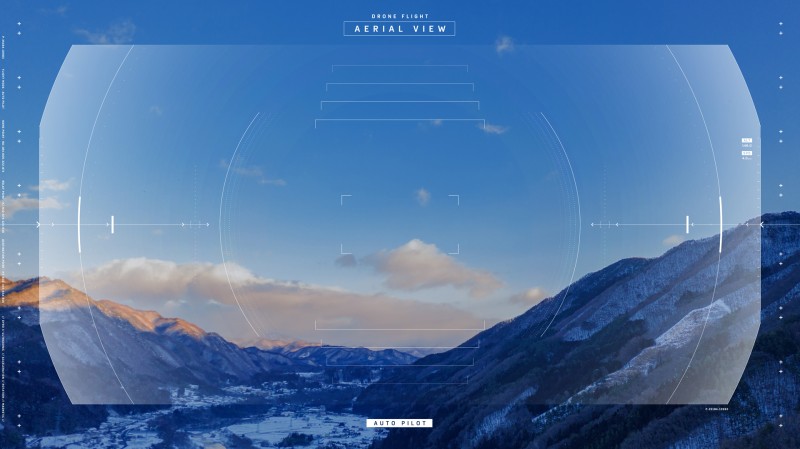The EU-funded URClearED SESAR Project is investigating critical technology to ensure that remotely piloted aerial systems (RPAS) can go about delivery and other type of business safely and securely.
The foreseen growth in drone deployment for civil and commercial purposes needs a
safe and secure way of sharing airspace with other (manned and unmanned) aircraft at intermediate altitudes.
The URClearER project is focusing on a key security aspect: the ‘remain-well-clear‘ (RWC) function. This function is a critical function for keeping a safe distance from other aircrafts, avoiding that such situations could result in a hazardous mid-air collision.
This will allow certified RPAS to safely share airspace with other (manned and unmanned) aircraft at intermediate altitudes. Here we are referring to altitudes below 18,000 feet, well below typical cruise altitudes of commercial airliners which fly at around 40,000 feet, explains project coordinator and CIRA research member Federico Corraro:
What is remain-well-clear (RWC) functionality? How is it achieved in manned aviation?
In aviation, ‘well clear‘ refers to a state in which a pilot considers the situation of the aircraft to be safe in relation to the surrounding air traffic. It is a prognostic function in the sense that its aim is to identify well in advance situations in which two aircraft would fly too close to each other. Therefore, remaining well-clear is a critical function for keeping a safe distance from other aircraft, avoiding that such situations could become a hazardous mid-air collision.
In manned aviation, air traffic controllers ensure separation using specific ground-based surveillance systems (primary and secondary radars). However, depending on the airspace class in which the aircraft flies and type of mission (instrument or visual flight rules – IFR or VFR ), you may have situations in which controllers have no responsibility in providing separation services to aircraft, such as general aviation flying in class G airspace. In these cases, the pilots currently rely on their ‘out-of-window’ view or on-board surveillance sensors (when available) to keep safe distances from other traffic.
What is the challenge you are trying to address?
URClearED aims to define the requirements and capabilities for the RWC function, to be integrated in RPAS vehicles flying IFR into specific parts of the sky that are referred to as airspace classes D-G. These air segments are indeed the most challenging portions of the airspace for the design of such a function for two main reasons:
- In most parts of airspace (D to G), air traffic controllers provide separation, which means the RWC is considered only as a backup function (for example, in class D with IFR traffic). However, in the case of class G, separation is not provided by the controllers, so the remote pilot must rely on the capabilities of the RPAS, hence the inbuilt RWC function.
- D to G airspace refers to low altitude portions of the sky, below 18,000 feet, in which small and medium-sized aircraft typically fly. Since these aircraft are possibly not equipped with transponders of any kind, they are only visible to the RPAS through active traffic sensors like radar, which in turn are limited in their range and field of view.
How are the authorities, ANSPs, and end users involved in the project?
Several stakeholders, like pilot and air traffic controller associations, research centres and unmanned industries, are taking part in the project advisory board supporting the team both to identify scenario and to define the RWC requirements. They will also support the analysis of the results of the validation campaigns that will be performed end of this year and during the next one These validations will be carried out by means of both fast and real-time simulations and will involve experienced air traffic controllers and remote pilots at both CIRA and DLR experimental laboratories, with the purpose to collect valuable information about the impact of the designed RWC function on human performance.
What benefits do you hope your project will bring?
By providing evidence of the effectiveness and safety of our implementation of the RWC function, we hope to facilitate the introduction and integration of certified RPAS in classes D to G allowing this part of the sky to be safe for day-to-day civil use.

For more information visit:




